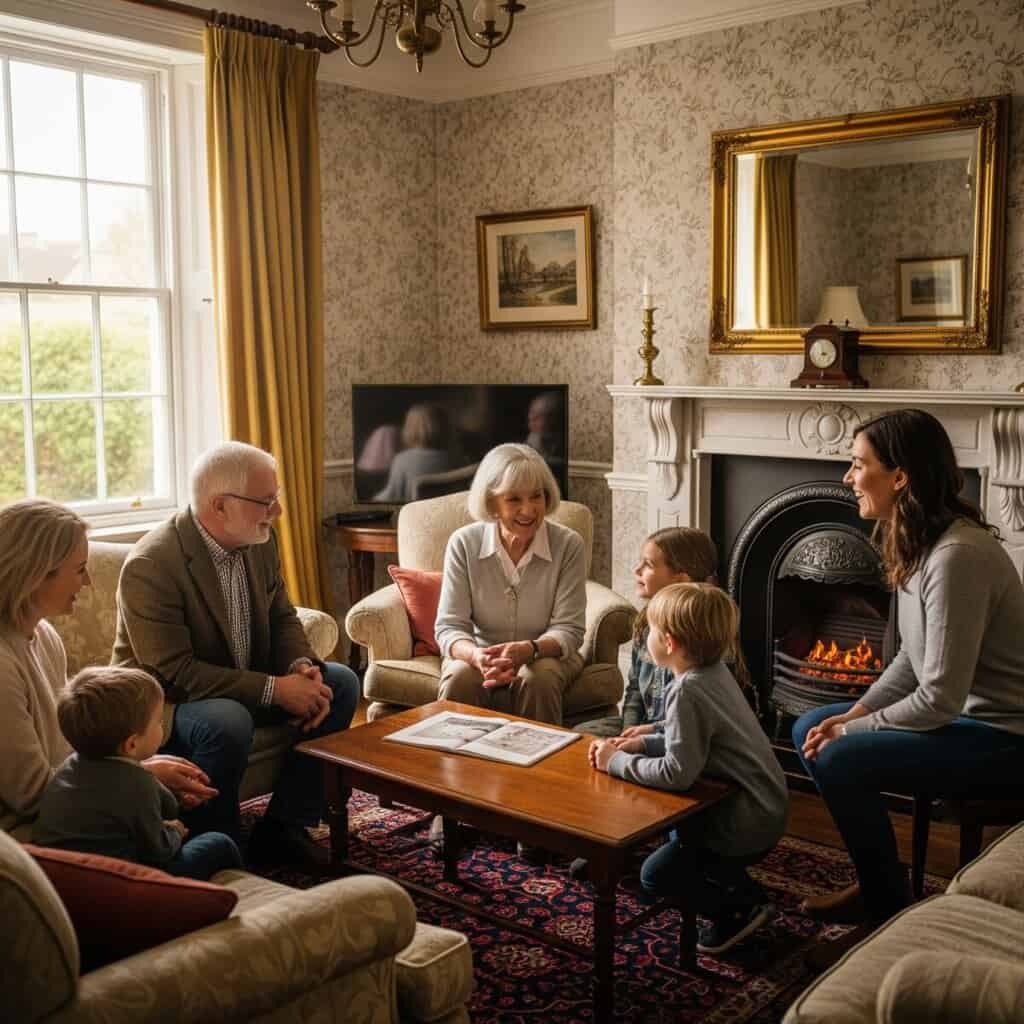Multigenerational living in Britain is increasingly becoming more than just a lifestyle choice — it’s a social phenomenon reshaping how families connect, support, and live together. As economic pressures mount and family dynamics evolve, more households are choosing to bring grandparents, parents, and children under one roof. But this shift comes with both significant benefits and important challenges.
Understanding the pros and cons of multigenerational living in Britain helps families decide whether this living arrangement fits their needs, values, and long-term goals.
What Multigenerational Living Means for British Families Today
At its core, multigenerational living means three or more generations sharing a home, creating a living environment where family ties and responsibilities intertwine daily. While this was once a common arrangement in UK families, the trend declined for decades due to urbanisation and social changes. Now, it’s experiencing a resurgence, driven by rising housing costs, longer life expectancy, and the desire to strengthen family bonds.
This renewed interest isn’t just about economics — it also reflects cultural shifts towards valuing shared experiences, collective wellbeing, and mutual care.
The Benefits of Multigenerational Living in Britain: More Than Just Financial Savings
Financial Relief in an Expensive Housing Market
One of the most immediate advantages of multigenerational living in Britain is the financial relief it offers. With house prices and rents continuing to soar, pooling resources to cover mortgage or rent payments, utility bills, and daily expenses can make homeownership or comfortable living more attainable for all involved. This collective approach eases the burden on younger generations struggling with wage stagnation or student debt, while providing older relatives with security and companionship.
Stronger Emotional Bonds and Daily Support
Living together fosters close-knit relationships and a built-in support network that transcends what’s possible through phone calls or weekend visits alone. Grandparents can play an active role in childcare, offering trusted care and wisdom, while younger family members provide assistance with technology, errands, or household tasks for their elders. This interdependence nurtures empathy, reduces loneliness, and enhances the emotional wellbeing of all family members.
Cultural Continuity and Passing Down Values
Multigenerational households act as living repositories of family history, culture, and traditions. Children grow up hearing stories from their grandparents, learning customs, recipes, and values that might otherwise be lost in more fragmented living arrangements. This continuity enriches identity and instils a sense of belonging, bridging generational gaps in meaningful ways.
The Challenges of Multigenerational Living in Britain: Navigating Complex Family Dynamics
Finding Privacy and Personal Space
Despite the many benefits, sharing a home across generations naturally strains privacy. Especially in smaller homes typical of many UK urban areas, finding quiet, individual space can be a challenge. This often leads to friction or frustration, especially when family members have differing routines, habits, or expectations of solitude.
Managing Different Generational Perspectives and Conflicts
Multigenerational living can sometimes amplify differences in values, parenting styles, or lifestyle preferences. What feels respectful or normal to one generation might feel intrusive or outdated to another. Successfully managing these tensions requires patience, empathy, and open dialogue — skills that not every family has had the opportunity to develop.
The Logistics of Household Responsibilities
With more people living under one roof comes a more complex web of chores, meal planning, and household maintenance. Without clear agreements and shared responsibility, these tasks can become sources of resentment and stress. Establishing routines and fairness in contributions is vital for harmony.
Making Multigenerational Living Work: Practical Tips for UK Families
If your family is considering this lifestyle, it’s important to plan thoughtfully. Communication should be the foundation — discussing expectations, boundaries, and roles openly before moving in together can prevent many common conflicts. Flexible home design or adaptations, such as separate living areas or soundproofing, can improve privacy. Seeking advice from family counsellors or housing advisors may also help create a sustainable and positive environment.
Multigenerational living in Britain is a powerful example of how families are adapting to modern challenges by leaning into tradition. While it’s not without its difficulties, many find the emotional and financial rewards far outweigh the downsides. For families seeking connection, mutual support, and resilience, this living arrangement offers a uniquely rewarding path forward.
Share Your Experience
Have you experienced multigenerational living in Britain — or are you considering it? Whether it’s been a positive journey or a challenging one, your insights could really help others thinking about the same path.
How did your family handle privacy, responsibilities, or generational differences? What advice would you offer to someone about to move into a multigenerational home?
Leave a comment below and join the conversation. We’d love to hear your story.


We want to hear your what you have to say